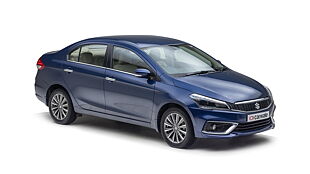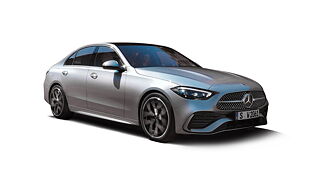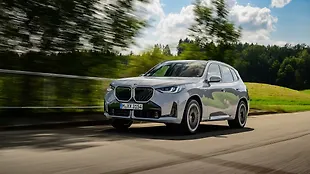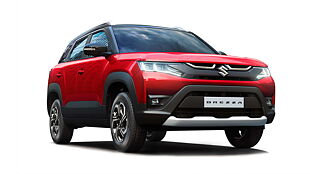What is it?

Every country in the world has a car in its modern era that was a quantum leap in terms of what it did for its people. America had the Ford Model-T, Germany the VW Beetle, France the Citroen 2CV, and us in India…this…the Maruti 800. There were predecessors and successors for all these cars but none that made an impact the way they did.
![Maruti Suzuki 800 [1984-1986] Left Front Three Quarter Maruti Suzuki 800 [1984-1986] Left Front Three Quarter](https://imgd.aeplcdn.com/0x0/statics/grey.gif)
And that’s pretty much where this story begins - memories! A throwback in time when the roads were empty and motoring was the forte of the privileged. The Maruti 800 is an instantly recognisable motoring icon for anyone that grew up in India in the 1980s or 1990s or even the early 2000s and by the time the last car was produced in 2014, all three different generations had colourful stories associated with the 800.
![Maruti Suzuki 800 [1984-1986] Right Rear Three Quarter Maruti Suzuki 800 [1984-1986] Right Rear Three Quarter](https://imgd.aeplcdn.com/0x0/statics/grey.gif)
When it came out in 1983, it created a sort of visible yet invisible hierarchy. Those that owned one, those that knew someone that owned one and lastly the outsider who belonged to neither but always dreamed of joining the club. It didn’t take more than one glimpse of the car on the then sparsely populated roads to induce happiness, contentment or desire.

I was one of them too. For years, I had seen and read so much about this legendary little car and coming to Mumbai for this job I eventually got the chance to drive every model of the 800 except this one, the first one. It always remained elusive…right until this point.
Oh goody!!!
![Maruti Suzuki 800 [1984-1986] Front Badge Maruti Suzuki 800 [1984-1986] Front Badge](https://imgd.aeplcdn.com/0x0/statics/grey.gif)
How is it on the outside?

While gathering my thoughts on the design of this first-generation Maruti 800, my mind went back to 2020 where I had the privilege of being one of the first few in the country to drive the Mercedes-Benz EQC and Tata Nexon EV and all I could think of was the motoring history being made that I got to witness.
![Maruti Suzuki 800 [1984-1986] Front View Maruti Suzuki 800 [1984-1986] Front View](https://imgd.aeplcdn.com/0x0/statics/grey.gif)
Standing in front of the dinky little M800, this was the same thought process that was running through my head. How different and futuristic it must have looked in the then brand new Maruti showrooms across the country. In 1983, we had Ambassadors and Padminis making up majority of our traffic. Amongst them, this little car would have surely been an object of intrigue, no doubt, invoked partly by its design language and partly by its size.

Today, hatchbacks make up the majority of the sub-Rs 10 lakh segment and more or less adhere to a certain set of acceptable design cues dictated by regulations and public demand. But where did it all begin for these set of cars in India? Right here with this marvel.
![Maruti Suzuki 800 [1984-1986] Rear View Maruti Suzuki 800 [1984-1986] Rear View](https://imgd.aeplcdn.com/0x0/statics/grey.gif)
The rectangular headlamps sit on the corners of the face while there’s a nice contrasting grey shade on the grille where the badges are placed. Our car was from the last batches of the SS80 run and thus got silver badges while the first run of cars in late 83 and some parts of 84 actually got a red badge making those cars even more desirable.

When we view today’s small cars in profile, there are so many elements. But none existed in this two-box functional design with just some plastic cladding on the raked C-pillar and one big line running between the wheel arches. The original Japanese-spec Alto was even available as a two-door that gave its silhouette a really smooth appearance.
![Maruti Suzuki 800 [1984-1986] Left Rear Three Quarter Maruti Suzuki 800 [1984-1986] Left Rear Three Quarter](https://imgd.aeplcdn.com/0x0/statics/grey.gif)
It is impossible to look at the profile and not see its iconic steel wheels – a design that went unchanged for almost 15 years. The actual wheels are just plain steel while our car is a bit more customised with a grey powder coat.
![Maruti Suzuki 800 [1984-1986] Wheel Maruti Suzuki 800 [1984-1986] Wheel](https://imgd.aeplcdn.com/0x0/statics/grey.gif)
It is only in the shadow of another car that you realise just how tiny and close to the ground it lays, reiterating its pet name ‘Dinky’. My favourite part of the rear design is a kink in the middle for the number plate making it look like a rather well-trimmed moustache. The owners of this 800 told me that the badges were hard to come by especially for this model and so while this isn’t the original layout, it’s a representation of the owners’ custom choice. As a final note on the exteriors, this car is missing some accessories and has visible rust but that's a part of the experience giving character lines to the car and letting it tell its story of how it has lived its life.
![Maruti Suzuki 800 [1984-1986] Car Roof Maruti Suzuki 800 [1984-1986] Car Roof](https://imgd.aeplcdn.com/0x0/statics/grey.gif)
How is it on the inside?
![Maruti Suzuki 800 [1984-1986] Dashboard Maruti Suzuki 800 [1984-1986] Dashboard](https://imgd.aeplcdn.com/0x0/statics/grey.gif)
Frugal
After racking my brains this was that one word that summed it all up when it came to the SS80s interiors. Now here’s the thing, if we try and look at the car from a modern perspective it is going to fail miserably but for me, it is the history that intrigues.
![Maruti Suzuki 800 [1984-1986] Instrument Cluster Maruti Suzuki 800 [1984-1986] Instrument Cluster](https://imgd.aeplcdn.com/0x0/statics/grey.gif)
The SS80 came from a time and place where the car didn’t have to be proportionate in size to match the expectation of the buyer. This means, you just packed yourself and possibly three others like a tin of sardines, cranked the engine and carried on like nothing had changed sitting inches away from each other.
![Maruti Suzuki 800 [1984-1986] Front Row Seats Maruti Suzuki 800 [1984-1986] Front Row Seats](https://imgd.aeplcdn.com/0x0/statics/grey.gif)
Step inside and there are three major elements to hold your attention - dashboard, seats and a massive glasshouse with a rather amazing view all around. The dashboard is this large black slab like shelf and houses all the individual controls that take up all the space as there’s no centre console. We do, however, get a lockable glove box which would have come as a boon in the era of plastics rulers and Maruti’s door locking mechanism (if you know, you know).
![Maruti Suzuki 800 [1984-1986] Front Door Handle Maruti Suzuki 800 [1984-1986] Front Door Handle](https://imgd.aeplcdn.com/0x0/statics/grey.gif)
For anyone above average Indian height, there’s an art to getting into the car. You have to crouch, put one leg under the large steering wheel, land your backside on the seat and then slide your other foot in before closing the door. The steering wheel design is iconic partly because it was the first one and partly because there was never another one like it. The stalks, buttons and switches will seem familiar to those who have driven any of the Maruti cars from the previous 25 years.
![Maruti Suzuki 800 [1984-1986] Front Row Seats Maruti Suzuki 800 [1984-1986] Front Row Seats](https://imgd.aeplcdn.com/0x0/statics/grey.gif)
When the 800 launched, front bucket seats were still a novelty and having your individual space in a car so tiny proved to be quite appealing. Despite the low seating position, it’s pretty comfortable behind the wheel and I could see myself doing long distances at a leisurely pace.
![Maruti Suzuki 800 [1984-1986] Pedals/Foot Controls Maruti Suzuki 800 [1984-1986] Pedals/Foot Controls](https://imgd.aeplcdn.com/0x0/statics/grey.gif)
If you thought the front seats were short on space, stepping into the rear, irrespective of your size, will always make you feel like the Great Khali. But that has never stopped anyone from stuffing in more people than the car could ever hold and then doing the kilometres without much struggle.
![Maruti Suzuki 800 [1984-1986] Rear Seats Maruti Suzuki 800 [1984-1986] Rear Seats](https://imgd.aeplcdn.com/0x0/statics/grey.gif)
To put that in a perspective, my uncle who was six feet and four inches drove an apple green SB308 for almost ten years. Every time our families were together, eight of us piled into the car and drove around without much of a struggle with pride!
![Maruti Suzuki 800 [1984-1986] Music System Maruti Suzuki 800 [1984-1986] Music System](https://imgd.aeplcdn.com/0x0/statics/grey.gif)
The 800 came from an era that didn't have to assent to the heavily enforced crash safety norms. This meant extremely thin pillars and a stellar view all around. But this also meant that the car heated up inside really quickly steaming the occupants within if you didn’t have the DX version that came fitted with an AC and tinted glass from the factory. I suspect this probably wouldn’t have been an issue in the 80s when cars were lesser in number and trees a lot more.
![Maruti Suzuki 800 [1984-1986] AC Controls Maruti Suzuki 800 [1984-1986] AC Controls](https://imgd.aeplcdn.com/0x0/statics/grey.gif)
Once you look past all the small jokes and tiny footprint of the 800's cabin, you realise that for what it was, the car’s interiors were quite smartly done. Every inch of available real estate was squeezed out to maximise passenger space but without losing out any form of functionality. It’s a formula that works in this segment even today and is quite visible in the 800’s latest descendant - the Alto that launched in 2020.
![Maruti Suzuki 800 [1984-1986] Boot Release Lever/Fuel Lid Release Lever Maruti Suzuki 800 [1984-1986] Boot Release Lever/Fuel Lid Release Lever](https://imgd.aeplcdn.com/0x0/statics/grey.gif)
How does it drive?

Tech specs
The Maruti 800 got its name from the 796cc three-cylinder carburetted petrol engine that produced a whopping 39.5bhp and 59Nm of torque that were channelled to the front wheels via a four-speed transmission. You got an independent front suspension and a leaf spring setup at the rear. Stopping power came from single piston disc brakes up front and mechanical drum brakes at the rear. It rode on 145/70 R12 wheels with bias tyres. You had the option to switch to radials in the aftermarket, which Maruti themselves began offering later.
![Maruti Suzuki 800 [1984-1986] Right Front Three Quarter Maruti Suzuki 800 [1984-1986] Right Front Three Quarter](https://imgd.aeplcdn.com/0x0/statics/grey.gif)
Slot in the metal key and crank the engine to life with a few jabs on the accelerator to get the system working. There are varied opinions regarding idling the engine and letting it warm up before setting off but at that time it seemed to be the norm so we decided to fall on the side of tradition and let the engine rumble a bit. For a car enthusiast like me in this modern age of BS6 and the likes, there’s a certain amount of joy listening to an unfiltered engine note no matter how small the motor may be.
![Maruti Suzuki 800 [1984-1986] Left Front Three Quarter Maruti Suzuki 800 [1984-1986] Left Front Three Quarter](https://imgd.aeplcdn.com/0x0/statics/grey.gif)
Once the car had done its required idling, we decided to set off. There’s a sense of unhurried occasion when you need to drive a car like the 800, it is going to take you where you want to Go but at a leisure pace and mostly on its terms. There’s no power steering (fun fact: the 800 never got it in its 31-year run) but that hardly matters as this car genuinely feels like a go-kart and it won’t take you more than a few tries to learn the art of low-speed manoeuvres while keeping the car in motion. It’s not the most accurate unit but in its era, it did the job quite well.
![Maruti Suzuki 800 [1984-1986] Gear Shifter/Gear Shifter Stalk Maruti Suzuki 800 [1984-1986] Gear Shifter/Gear Shifter Stalk](https://imgd.aeplcdn.com/0x0/statics/grey.gif)
The four-speed box has been geared quite short and you are pretty much in fourth gear past the 40kmph mark. The mid-range is extremely strong or let me put it this way, that’s pretty much all you got if you wanted the car to be in its comfort zone.
![Maruti Suzuki 800 [1984-1986] Wheel Maruti Suzuki 800 [1984-1986] Wheel](https://imgd.aeplcdn.com/0x0/statics/grey.gif)
The 800 was one of the first cars in India to get front discs as standard introducing the average buyer to a world of reassured halting. While doing the research, I discovered how this created a bit of an issue on the roads initially with its front discs and ultra-lightweight stopping the Dinky instantly resulting in many older cars (with no such attribute) crashing into them. While that might have felt mega at that time, the brakes on our car were slow to respond prompting me to revisit my lessons in effectively using engine braking and just for fun a bit of rev-matching to keep things smooth.
![Maruti Suzuki 800 [1984-1986] Left Side View Maruti Suzuki 800 [1984-1986] Left Side View](https://imgd.aeplcdn.com/0x0/statics/grey.gif)
We have come a long way in terms of ride quality and it’s quite evident in what Suzuki had fitted on the 800 to tackle the Indian roads of the 1980s. The independent front and leaf spring rear meant that potholes, speed breakers and imperfections were tackled smoothly on entry and concluded with a rather imperfect crash when exiting.
![Maruti Suzuki 800 [1984-1986] Left Front Three Quarter Maruti Suzuki 800 [1984-1986] Left Front Three Quarter](https://imgd.aeplcdn.com/0x0/statics/grey.gif)
When stationary, the car is an attention magnet due to its rarity. However, you tend to be out of view of a lot of modern vehicles when on the go due to its low height and small size, and that’s something you need to watch out for while driving in a Dinky.
![Maruti Suzuki 800 [1984-1986] Right Side View Maruti Suzuki 800 [1984-1986] Right Side View](https://imgd.aeplcdn.com/0x0/statics/grey.gif)
Could I buy one today?

You could, but it depends on the car’s state and condition. At the time of writing this feature, you get an SS80 800 for anywhere between Rs 25,000 to well 1.5 lakh for a fully loaded DX model. The car’s rarity is now at an all-time high due to ambiguous government regulations and the fact that these vehicles are prone to rusting especially if you lived in a coastal state.
![Maruti Suzuki 800 [1984-1986] Right Rear Three Quarter Maruti Suzuki 800 [1984-1986] Right Rear Three Quarter](https://imgd.aeplcdn.com/0x0/statics/grey.gif)
They existed at a time before free-market India thus making it a Maruti more than a Suzuki. Once the government opened up the car industry to the rest of the world in the early 1990s, this version of the 800 quietly faded into the background far away from the view of the average buyer.
![Maruti Suzuki 800 [1984-1986] Right Front Three Quarter Maruti Suzuki 800 [1984-1986] Right Front Three Quarter](https://imgd.aeplcdn.com/0x0/statics/grey.gif)
However, its importance in our car history will never be forgotten even 100 years from now as it was ‘the car’ that put India on the road.
Viva La Fronte!
Photography: Kaustubh Gandhi

![Maruti Suzuki 800 [1984-1986] Image Maruti Suzuki 800 [1984-1986] Image](https://imgd.aeplcdn.com/272x153/cw/cars/discontinued/maruti-suzuki/800-1984-1986.jpg?q=80)

























